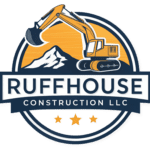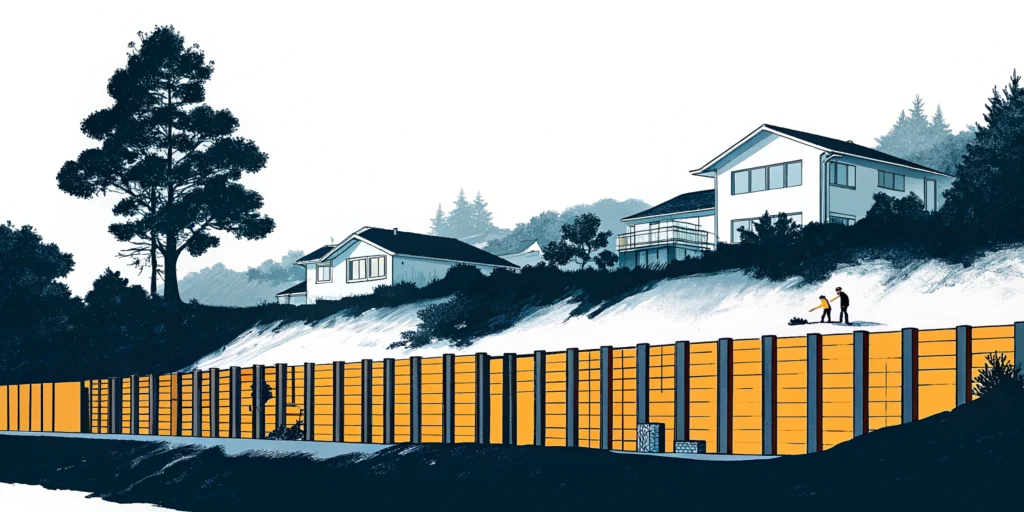Excavation shoring safety guidelines help you protect workers and preserve project timelines on soldier pile and lagging panel support systems. By following proven trench support and ground retention practices, you cut collapse risk by up to 85 percent and maintain schedule reliability. Here’s how you apply these standards, from design through installation to ongoing inspection.
Soldier pile shoring basics
Define soldier piles
A soldier pile consists of vertical steel H-beams driven at regular intervals along an excavation face. You select beam size and spacing based on soil classification and excavation depth.
Role of lagging panels
You install lagging panels horizontally between piles to retain soil and limit groundwater seepage. Panel materials range from treated timber to precast concrete, tailored to site conditions.
Review safety requirements
OSHA excavation standards
OSHA sets excavation standards in Title 29 CFR 1926 subpart P. These rules cover protective systems for trenches and excavations. These measures align with OSHA excavation standards.
Permit and code compliance
You need local permits and inspections for deep excavations. Always coordinate with municipal authorities to verify soil reports and design approvals.
Plan installation process
Conduct site assessment
First, you survey soil conditions and groundwater levels. You test soil classification to choose the right support spacing and depth.
Design support system
Work with geotechnical engineers to size soldier piles and lagging panels. Leverage soldier pile wall construction data and lagging panel design guidelines for accurate specs.
Execute shoring installation
Drive soldier piles
Use heavy-duty hydraulic hammers or vibratory drivers. Align piles within one-quarter-inch tolerance to maintain wall straightness. For reliable machinery, consult excavation shoring equipment.
Install lagging panels
Place lagging panels sequentially from bottom to top. Secure panels against piles using predetermined anchorage. Follow the installation of lagging panels process for best results.
Enforce protective measures
Sloping and benching
Where space allows, slope the excavation face to a safe angle or bench the sides to reduce pressure. Typical approaches include:
- Sloping at 1H:1V for stable soils
- Benching steps of 2- to 4-foot heights for mixed ground
Shoring and shielding
When slopes are impractical, install shoring supports or trench boxes. Choose proper shoring systems for deep excavation to match soil type and excavation depth. Shielding with trench boxes protects crews if a collapse occurs.
Inspect and maintain
Routine inspections
Perform daily visual checks of pile alignment and panel seating. Look for signs of soil movement, water intrusion, or deflection.
Addressing common failures
If you spot wall deflection, reinforce with additional struts. In case of corrosion, replace affected steel sections promptly. Always consult your design engineer before making changes.
Leverage digital tools
Operations platform benefits
A digital platform helps you log inspections, track maintenance tasks, and store reports. It boosts compliance and transparency across teams.
Integrating with SafetyCulture
For example, SafetyCulture offers mobile-first checklists and photo capture. You can customize templates to match your shoring standards. Field crews update logs in real time for faster decision making.
Why choose us
RuffHouse Construction LLC leads WA and OR projects with local expertise and proven results:
- Local expertise in Washington and Oregon conditions
- Proven safety record: zero incidents in 50+ projects
- Timely delivery: 95 percent of projects on schedule
- Comprehensive service from design through maintenance
When you’re ready to secure your excavation with reliable soldier pile and lagging panel support, contact RuffHouse Construction LLC for expert guidance.
Frequently asked questions
What depth requires soldier pile shoring?
You typically choose soldier pile walls for excavations deeper than 15 feet, especially in tight urban sites.
How do I comply with OSHA regulations?
Follow Title 29 CFR 1926 subpart P and document your protective systems thoroughly before work starts.
Can I reuse lagging panels?
Yes, you can reuse timber or steel panels if they pass a damage inspection and meet strength requirements.
What spacing is standard for soldier piles?
Piles usually sit 6 to 10 feet on center, depending on soil conditions and planned excavation depth.
How often should inspections occur?
Perform visual checks daily and conduct formal assessments weekly or after severe weather.
Ready to start your own soldier pile wall project in Seattle, Tacoma, or anywhere in Puget Sound?
Learn how Ruffhouse Construction delivers safe, code-compliant soldier pile and lagging wall installations for any site.
See our Soldier Pile Installation Services for details and request a free estimate today.

